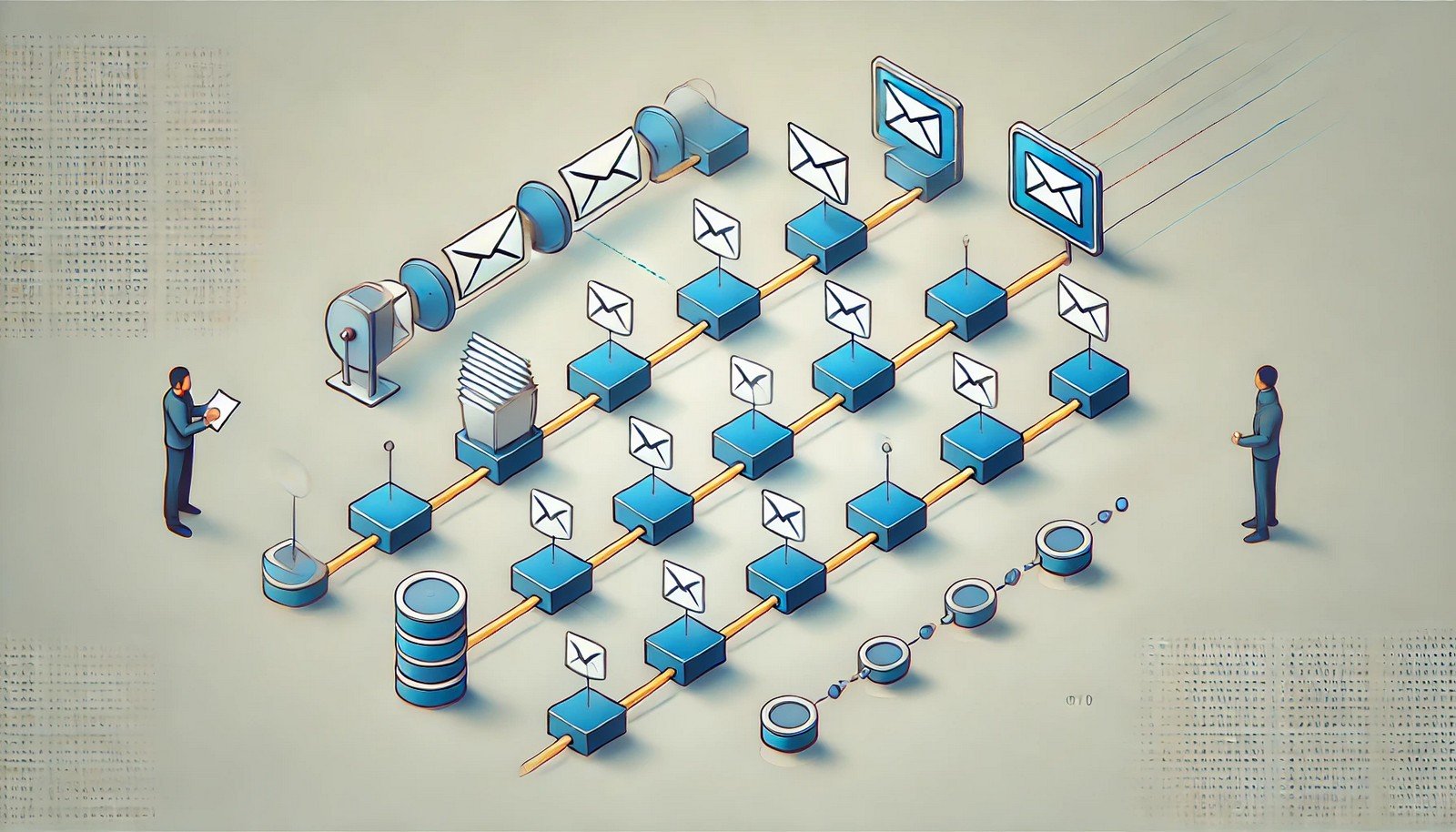Message Queues
 (Representational Image | Source: Dall-E)
(Representational Image | Source: Dall-E)
Quick Navigation:
- Message Queues Definition
- Message Queues Explained Easy
- Message Queues Origin
- Message Queues Etymology
- Message Queues Usage Trends
- Message Queues Usage
- Message Queues Examples in Context
- Message Queues FAQ
- Message Queues Related Words
Message Queues Definition
Message queues are a form of asynchronous communication between different components or services in a system. They allow messages to be stored temporarily in a queue and processed later, ensuring that different parts of a system can operate independently. Message queues are widely used in distributed systems, microservices, and event-driven architectures to enhance scalability, reliability, and fault tolerance. Popular message queue implementations include RabbitMQ, Apache Kafka, and AWS SQS.
Message Queues Explained Easy
Imagine you want to send a letter to a friend. You drop the letter in a mailbox, and later, the postal service picks it up and delivers it. Your friend doesn’t need to be home when you send it, and they can read it whenever they get it. A message queue works similarly—it holds messages until the receiving system is ready to process them.
Message Queues Origin
Message queuing concepts emerged from early distributed computing systems in the 1960s and 1970s. With the growth of enterprise computing in the 1990s, dedicated message queuing systems like IBM MQ were developed to manage large-scale business transactions.
Message Queues Etymology
The term "message queue" comes from the idea of a queue, where messages are lined up and processed in a first-in, first-out (FIFO) order, similar to a physical queue.
Message Queues Usage Trends
Message queues have seen a surge in usage with the rise of cloud computing and microservices. They are now essential in modern distributed systems, used by companies like Netflix, Amazon, and Google to handle millions of requests per second efficiently. Event-driven architectures and serverless computing further drive the adoption of message queuing technologies.
Message Queues Usage
- Formal/Technical Tagging:
- Distributed Systems
- Microservices Architecture
- Event-Driven Processing - Typical Collocations:
- "message queue processing"
- "asynchronous message handling"
- "message queue architecture"
- "message broker system"
Message Queues Examples in Context
- A banking system uses message queues to process transactions asynchronously, ensuring reliability even during peak traffic.
- E-commerce platforms utilize message queues to handle order processing, inventory updates, and notifications.
- Streaming services like Netflix use message queues to process millions of video streaming requests without system overload.
Message Queues FAQ
- What is a message queue?
A message queue is a communication system that temporarily holds messages until they are processed by a receiving service. - Why are message queues important?
They enable asynchronous communication, decoupling different parts of a system and improving scalability and reliability. - What are some popular message queue implementations?
Examples include RabbitMQ, Apache Kafka, AWS SQS, and Azure Service Bus. - How does a message queue differ from a database?
A database stores data permanently, while a message queue holds transient messages for asynchronous processing. - What is the difference between a message queue and an event stream?
A message queue follows FIFO order, while event streams like Kafka support parallel processing and event replay. - Can message queues improve system performance?
Yes, they help distribute workloads, prevent bottlenecks, and improve system responsiveness. - How are message queues used in microservices?
They enable communication between microservices, ensuring services can scale independently. - What challenges do message queues present?
Common challenges include message duplication, latency, and managing queue persistence. - Is RabbitMQ the same as Kafka?
No, RabbitMQ is a traditional message broker, while Kafka is designed for event streaming and high-throughput messaging. - How do message queues handle failures?
They use message acknowledgment, retries, and dead-letter queues to ensure message delivery.
Message Queues Related Words
- Categories/Topics:
- Distributed Messaging
- Event-Driven Architecture
- Cloud Computing
Did you know?
Message queues power mission-critical systems, including real-time stock trading platforms and airline reservation systems. They ensure millions of transactions are processed seamlessly, even during system failures or unexpected surges in demand.
PicDictionary.com is an online dictionary in pictures. If you have questions or suggestions, please reach out to us on WhatsApp or Twitter.Authors | Arjun Vishnu | @ArjunAndVishnu

I am Vishnu. I like AI, Linux, Single Board Computers, and Cloud Computing. I create the web & video content, and I also write for popular websites.
My younger brother, Arjun handles image & video editing. Together, we run a YouTube Channel that's focused on reviewing gadgets and explaining technology.



Comments powered by CComment